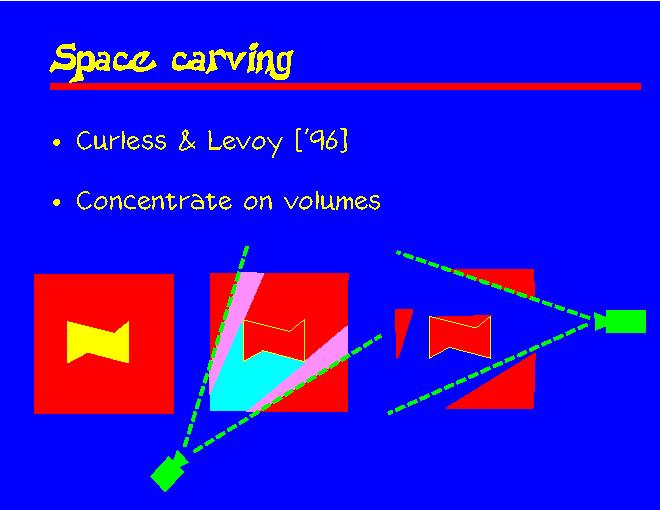Click slide for next, or goto previous, first, last slides or back to thumbnail layout.

Click slide for next, or goto previous, or back to thumbnail layout.
Click slide for next, or goto previous, first, last slides or back to thumbnail layout.

Click slide for next, or goto previous, or back to thumbnail layout.
The approach we looked into is called space carving, and it was brought into our attention by a paper by Curless and Levoy. In space carving one first concentrates on volumes, and only later extracts the surface.
Let's assume we have a working volume (red) in which there is the object we want to reconstruct (yellow). When we scan the object from the green camera, we know that all space between the camera and observed surfaces must be empty and can be carved away. The light blue area is in front of the object, and the pink area is carved because of the background, or maybe it could be deduced by color, etc., that those parts project to the background rather than to object.
We can then repeat the process from another viewpoint, and carve even more space. In the end we just take the remaining connected component and extract its boundary, which serves as our surface estimate. The result is a closed surface that encloses the largest volume such that the representation is consistent with all the scan data.